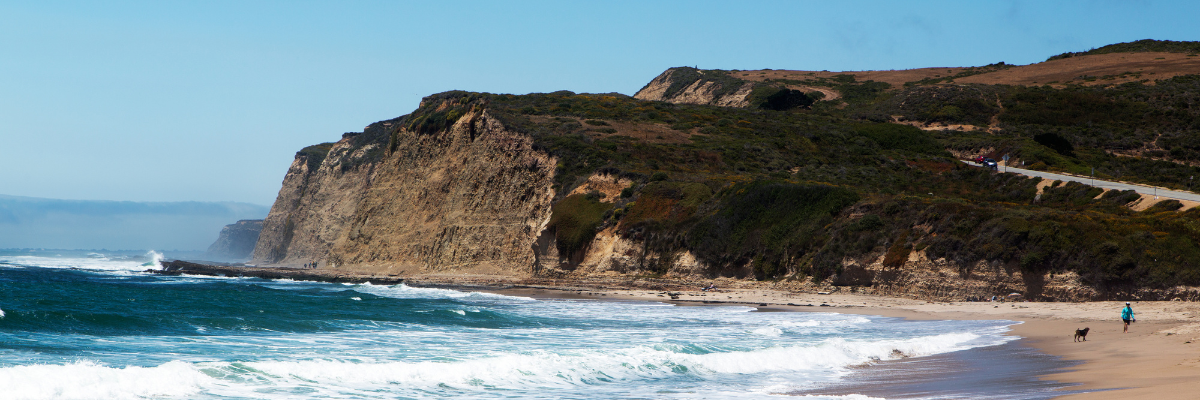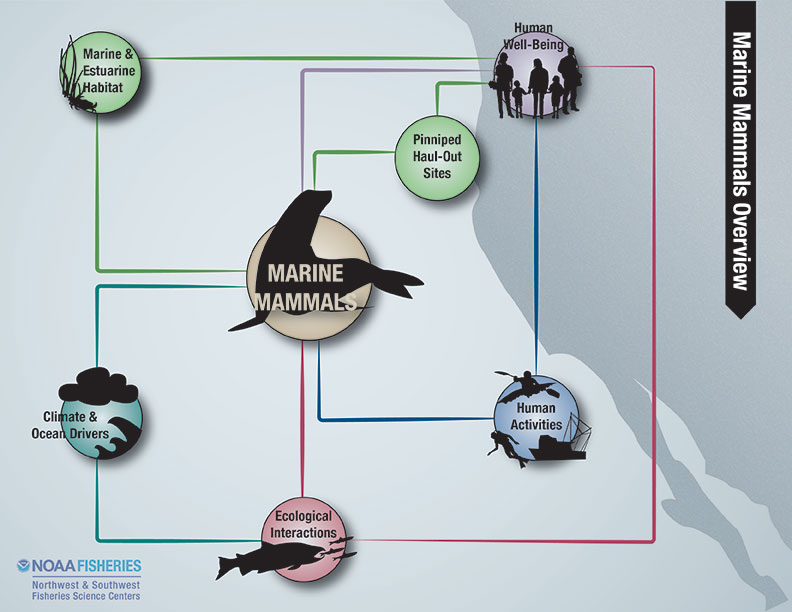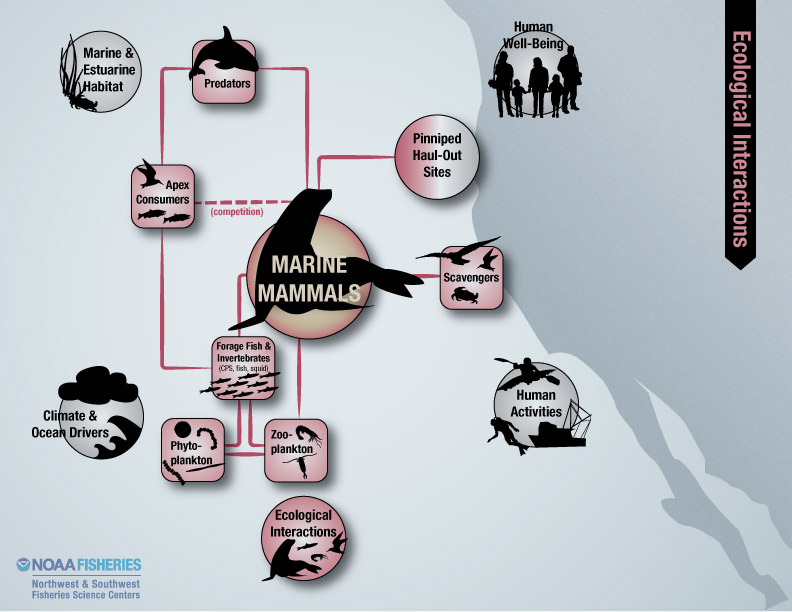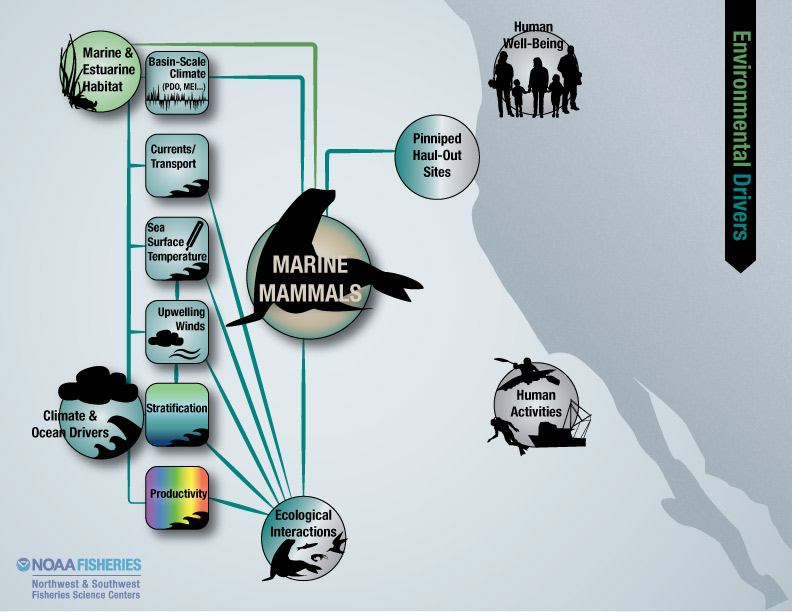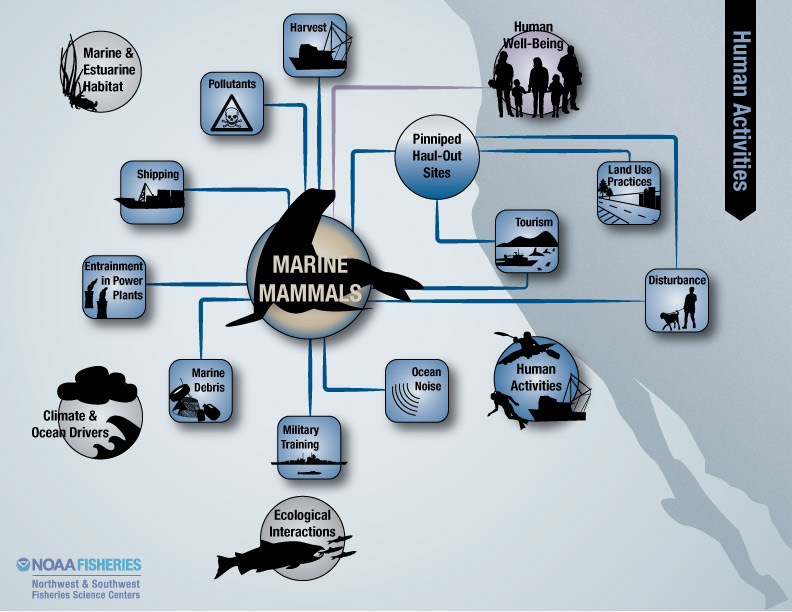Marine mammals comprise an important apex predator group in the California Current Ecosystem with 24 whale, 11 dolphin, 2 porpoise, 6 pinniped, and one fissiped species.
A number of marine mammal populations were severely depleted by commercial or bounty hunting in the late 19th and early 20th centuries. All species were protected under the federal Marine Mammal Protection Act of 1972 and since then many populations have rebounded. Much remains to be learned about their role in the ecosystem following population depletion and recovery.
Variability in marine mammal distribution and abundance is driven by ecological interactions, anthropogenic pressures, and environmental variability and change. The CCIEA Marine Mammal Team focuses on tracking indicator species and identifying relationships among marine mammals and these drivers to inform management and the public of risks to recovery and conservation issues.
